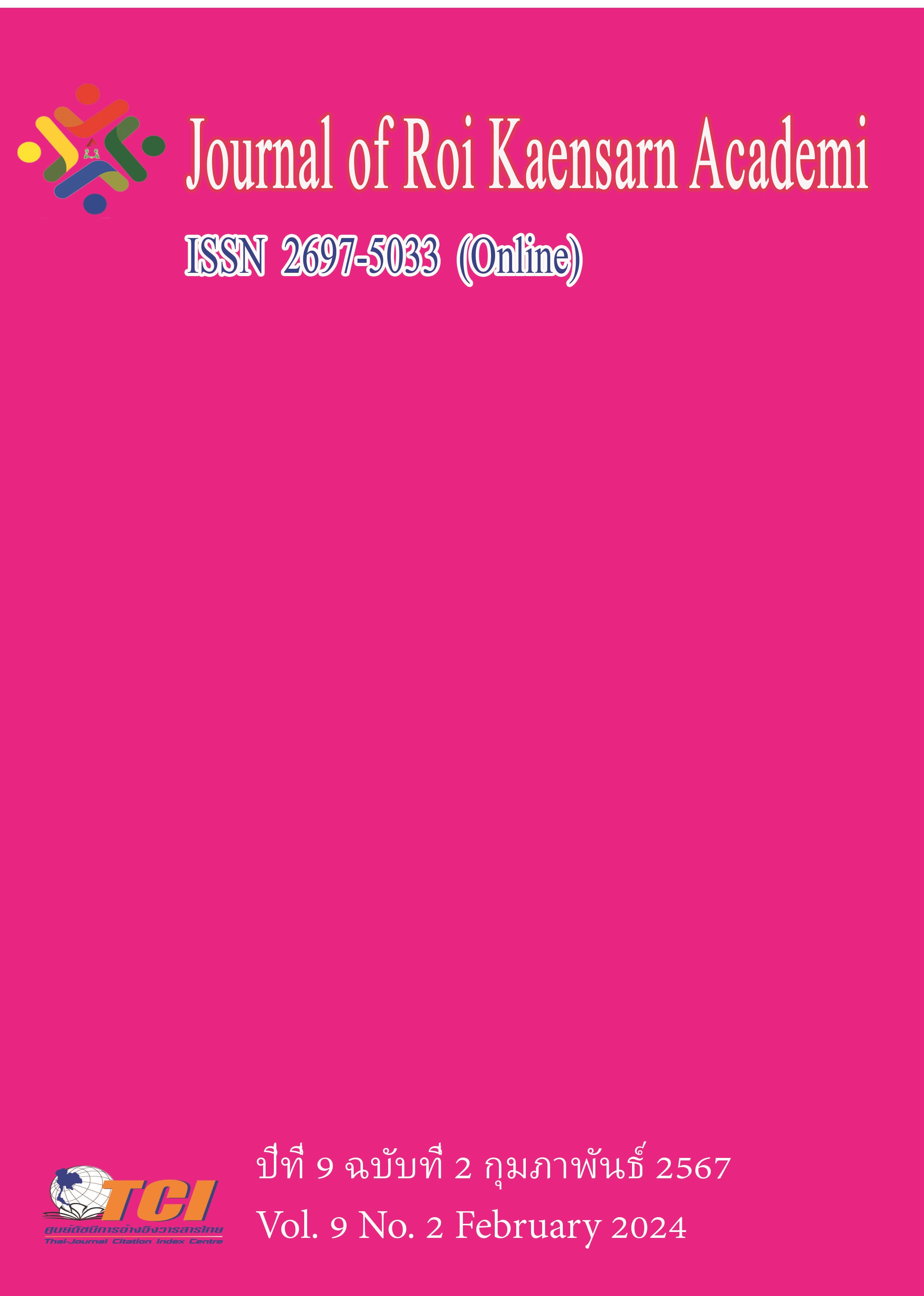The Jiangyong Nüshu of China: Signifier and Signified against the Backdrop of Indigenous Intangible Cultural Heritage Inheritance
Main Article Content
บทคัดย่อ
Nüshu has been the sole kind of gender-specific script worldwide. Concerning the development course of the indigenous intangible cultural heritage over the years, Nüshu has always been a local and even global highlight. In this research, the qualitative approach was adopted to describe and analyze the changes in Nüshu culture symbols against the background of indigenous intangible cultural heritage inheritance. The objectives of this study include exploring both the signifier and signified, as well as the connotation and denotation of symbols in characters, sounds, patterns, and customs of Nüshu culture. This was achieved through literature investigation and research, employing the Theories on Semiotics by both Ferdinand de Saussure and Roland Barthes as primary research instruments.
According to the findings herein, Nüshu has experienced two different development stages against the backdrop of indigenous cultural inheritance. The meanings of various symbols in Nüshu culture have changed, thus reflecting the gender-specific progression over the times and the needs for indigenous culture inheritance and development. The research conclusions herein excavate the rich representation and connotation in Nüshu culture, highlight even more its culture inheritance value and significance, and thereby facilitate in the live transmission of indigenous intangible cultural heritage. The population and sample for this study were selected to provide a comprehensive understanding of these dynamics in the context of Nüshu's unique cultural and historical background.
Article Details
เอกสารอ้างอิง
Chen, H. C. (2013). Symbolic research on the cultural symbols of Yongzhou Nüshu [Master's thesis, Jiangnan University]. CNKI.
Chen, Q. J. (2017). Chinese folklore. Shanghai People's Publishing House.
Du, Y., & Pinyonatthagarn, D. (2022). Nüshu in the sense of pragmatics. Baltic Journal of Law & Politics, 15(2), 1202–1214.
Gong, Z. B. (1992). Social reasons for the rise and fall of Nüshu. Seek, vol(1), 69–73.
Guo, J. Z. (2020). Exploration on innovative methods of cultural and creative products for the living inheritance of intangible cultural heritage in Hunan Province—Taking Jiang Yong Nüshu as an example. Hunan Packaging, 35(5), 50–53.
He, Y. (2021). An analysis of the inheritor system of Jiang Yong's Nüshu. Cultural Heritage, vol(3), 48–55.
Jiang, S. T. (2018). The composition and basic characteristics of Nüshu culture from the perspective of local literature. University Library Work, 38(1), 53–55.
Kendir, A. Z., & Duman, L. D. T. (2023, January 19). Finding a way out: Nüshu. ResearchGate.
Li, Q., & Lu, Y. X. (2023). Deconstruction and reconstruction of culture: The iterative changes in the inheritance field of Nüshu and its subject practice. Media Watch, vol(3), 55–63.
Liu, Z., & Jiang, Z. Q. (2023). Back to the future: Nüshu font design research and font development. Decorate, vol(2), 24–29.
Liu, Z. H. (2005). Miracle in the Boudoir: Chinese Nüshu. Heilongjiang People's Publishing House.
Long, X. Q. (2006). Theoretical thinking on the connotation, characteristics and protection principles of intangible cultural heritage. Journal of Hubei University for Nationalities, vol(5), 47–52.
Lu, Y. Q., & Liu, J. (2023). A visual schematic exploration of the origin theory of Enshi Tujia hand-waving dance from the perspective of design semiotics. Hunan Packaging, 38(4), 51–54.
Luo, X. G. (2022). Interpretation of Nüshu. Hunan University Press.
Mo, J. (2016). Research on digital inheritance and innovation of Jiangyong Nüshu graphic art. Art Observation, vol(8), 126–127.
Moratto, R. (2022). Nüshu in translation: Challenges of translating a unique Chinese cultural heritage. In J. Zhao, D. Li, & R. Moratto (Eds.), Chinese literature in the world: Dissemination and translation practices (pp. 195–206). Springer Nature.
Peng, P. (2022). The symbol view of contemporary Nüshu. Chinese Culture Forum, vol(1), 19–25.
Peng, X. Q. (2014). Realistic dilemmas and innovative strategies for traditional cultural inheritance in the new media era. Jiangxi Social Sciences, 34(12), 233–238.
Qin, H. (2019). The living inheritance of the cultural function of Nüshu in modern life. Hunan Packaging, 34(4), 92–94+135.
Tian, Y.-P., Liu, P.-L., Xie, Y.-N., Zhou, Y.-M., Hao, C., & Chen, J. (2019). Bibliometric and Visualized Analysis of the Research on Nüshu in China [Paper presentation]. 4th Annual International Conference on Social Science and Contemporary Humanity Development (SSCHD 2018), Wuhan.
Wang, F. H. (2017). An analysis of the characteristics of Nüshu culture. Hunan Social Sciences, vol(1), 178–183.
Yan, L. S., Wang, T., & Bian, J. F. (2013). On the psychotherapeutic value of Chinese Nüshu culture. Journal of Nanjing Normal University, vol(3), 107–112.
Yang, D. F. (2000). On the concept of "men are superior to women" in Chinese. Zhongzhou Academic Journal, vol(2), 112–114.
Zhang, M. H. (2019). Analysis of the stroke order characteristics of Jiang Yong Nüshu. Decorate, vol(9), 117–119.
Zhang, M. H. (2023). Research on the art of Jiang Yong’s Nüshu. Research on the art of Jiang Yong’s Nüshu.
Zhao, L. M. (1992). Collection of Chinese Nüshu—A unique collection of female written materials. Tsinghua University Press.
Zhao, L. M. (1993). The excavation and research of China Nüshu. Women's Studies Series, (1), 41–45, 34.
Zhao, L. M. (2005). Collection of Chinese Nüshu. Zhonghua Book Company.
Zhao, Y. M. (2020). Research on the dilemma of inheriting Nüshu in Jiangyong, Hunan. Drama House, (21), 213.
Zhou, F. Z. (2009). Nüshu and "octagonal flower" pattern. Artistic Exploration, 23(1), 102+107+167.
Zhou, H. J. (2005). Jiangyong women in the world of Nüshu [Master's thesis, Central South University]. CNKI.
Zuo, M. Y. (2019). Interpretation and design extension of Nüshu text symbols [Master's thesis, Nanjing Arts Institute]. CNKI.

